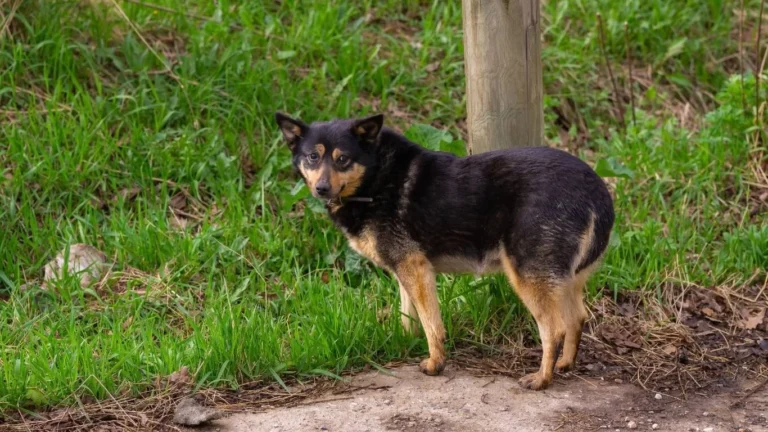What to Do If Your Dog Gets a Snake Bite: Essential Steps
If you’ve ever Googled what to do if your dog gets a snake bite, odds are you were either in full-blown panic mode or trying to prepare for the unthinkable. Either way—hey, you’re in the right place. I’ve been a Veterinary Assistant for a few years now, and I’ve seen my fair share of snake bite emergencies walk (or be carried) through clinic doors. With a special focus on pet nutrition, I’ve learned that there’s way more to recovery than just the anti-venom shot. So let’s break it down together—casual, calm, and real-talk style.
First Things First: Is It Really a Snake Bite?

Common Signs Your Dog May Have Been Bitten
Depending on the type of snake and where the bite occurred, symptoms can look super different. Sometimes it’s obvious—like two puncture marks and swelling the size of a grapefruit. Other times? It’s more subtle. Here’s what I’ve seen the most:
- Sudden swelling—especially on the face, neck, or legs
- Pain or limping if the bite’s on a limb
- Drooling, shaking, or vomiting
- Discoloration around the bite area—often bruising fast
- Lethargy or weakness that seems to come out of nowhere
It’s important to stay calm. One time, a sweet old Labrador came in after a backyard nap gone wrong. His paw was swollen, and he was crying out—but we didn’t see fang marks right away. Still, we treated it like a snake bite because time is everything in these cases.
Step-by-Step: What to Do If Your Dog Gets a Snake Bite

1. Don’t Try to Suck Out the Venom (Seriously, Please Don’t)
This might sound old-school cowboy, but it does more harm than good. Trying to suck out venom can actually spread it faster or cause infection. Just skip that part, I beg you.
2. Keep Your Dog Calm and As Still As Possible
Movement speeds up how fast venom travels through the bloodstream. I know it’s tough—your pup’s probably scared and hurting—but try to carry them if you can. One pet parent I worked with used a beach towel as a makeshift stretcher. Genius, honestly.
3. Call Your Vet or Nearest Emergency Animal Hospital—Now
Even if you’re unsure whether it was a venomous snake, call anyway. Describe the situation, symptoms, and if you saw the snake, share what it looked like. Do not waste time trying to catch or kill the snake. That’s risky for both you and your dog, and vets rarely need the snake to start treatment.
4. Try to Identify the Snake (From a Distance!)
If you got a quick look, try to remember details like:
- Color patterns—was it banded, solid, spotted?
- Size and head shape—triangular heads usually mean venomous
- Behavior—did it rattle, hiss, or slither away quickly?
Again, don’t go full wildlife photographer. A blurry photo from 10 feet away is more than enough for the vet team to get an idea.
5. Don’t Apply a Tourniquet
This is another common myth I wish would disappear. A tourniquet can cause serious tissue damage and make things worse. If you absolutely must slow down blood flow (like if the vet tells you to over the phone), a loose pressure bandage is the way to go—but that’s something to do under direct guidance.
The Vet Visit: What to Expect at the Clinic

Diagnostics and Triage
When you arrive, your dog will likely be rushed to the back for immediate assessment—especially if the bite was to the face or neck. Vets will check vitals, pain level, swelling, and signs of neurological involvement. Some clinics use clotting tests and bloodwork to gauge how much venom’s in the system.
Antivenom: Not Always Automatic
Here’s a behind-the-scenes detail most pet parents don’t know: not every snake bite means an antivenom shot. Sometimes bites are dry (no venom injected), and other times the risk of a reaction to antivenom outweighs the benefits. The vet will decide based on symptoms, snake type, and timing. And let me tell you, the antivenom isn’t cheap—it can run hundreds to thousands of dollars depending on the clinic and region.
Supportive Care Is Just as Important
Beyond antivenom, your dog might get:
- IV fluids to support kidney function and hydration
- Pain meds and anti-inflammatories
- Antibiotics if there’s risk of infection
- Ongoing monitoring—sometimes overnight
I remember one case—a Jack Russell Terrier that got bit on a camping trip—who did great without antivenom. But he had to stay on fluids and watch for tissue necrosis around the bite site for a few days. That’s where good supportive care makes all the difference.
What About Aftercare?
Recovery can take a few days to weeks. I’ll go into more detail on home care, diet, and healing in the next part, but here’s a quick heads-up: your dog’s immune system and overall health play a massive role in recovery. This is where nutrition and supplements can seriously help speed things up.
Recovery at Home: The Healing Process After a Snake Bite

Every Dog Heals Differently
Once the adrenaline settles and you’re back home from the vet, it’s time to focus on healing—and let me tell you, this stage matters just as much as the emergency care. Depending on the severity of the bite and the type of snake, recovery can range from a few days to a few weeks. Some dogs bounce back in no time (those scrappy little terriers, man), while others—especially seniors or dogs with underlying conditions—need a bit more TLC.
One German Shepherd I helped treat had a bite near his shoulder and needed nearly two weeks of wound care and limited movement. His pet parent made him a cozy little recovery den in the living room, complete with orthopedic bedding and calming music. It made such a difference in his mood.
Wound Monitoring and Care
Keep an eye on the bite site daily. Here’s what to watch for:
- Increased swelling or redness after the first few days
- Foul odor or oozing—possible sign of infection
- Crusting or tissue darkening—could mean necrosis
Clean the area only if your vet instructs you to, usually with a gentle antiseptic or saline rinse. Don’t apply creams or ointments unless prescribed—some over-the-counter stuff can actually make things worse for dogs.
Medications and Schedules
Stick to the medication plan your vet gives you like it’s a recipe for grandma’s cookies—exactly and on time. Pain meds, anti-inflammatories, and sometimes antibiotics are prescribed. If your dog resists pills (and let’s be real, most do), here are a few sneaky tricks:
- Hide it in a soft treat or bit of cheese
- Use pill pockets (lifesavers, seriously)
- Ask your vet if a liquid or injectable version is available
Oh—and don’t stop meds early just because your pup “seems better.” I’ve seen cases where inflammation came roaring back after stopping too soon.
What to Feed a Dog Recovering from a Snake Bite

Nutrition = Healing Fuel
This is where my nutrition-focused background comes in. After a snake bite, your dog’s body is working overtime to repair tissue, fight inflammation, and flush out toxins. The right food makes a huge difference here. Prioritize meals that are:
- High in protein – for tissue repair
- Easy to digest – think boiled chicken, rice, or prescription recovery diets
- Rich in omega-3s – these help reduce inflammation (salmon oil is a great add-on)
I always recommend avoiding kibble for the first few days unless your dog’s super into it. Wet food or homemade bland meals tend to go down easier when they’re feeling “off.” One of my clients used bone broth ice cubes to keep her pup hydrated and happy—it was genius and gentle on the stomach.
Supplements That Can Help
Here are a few vet-approved additions I like to suggest during recovery (ask your vet first, of course):
- Probiotics – especially if antibiotics were prescribed
- Milk Thistle – for liver support and detox
- Turmeric or Curcumin – natural anti-inflammatory support
- Vitamin C – may help support the immune system
Supplements aren’t a magic fix, but I’ve seen dogs bounce back faster with the right combo. Just be mindful of dosages, and go for quality over quantity.
Activity & Behavior: What’s Normal (And What’s Not)

Slow and Steady Wins the Race
Even if your pup is acting “normal” a few days in, don’t let them go wild at the dog park just yet. Keep activity minimal for the first 7–10 days. Swelling may take time to go down, and internal tissue damage (which you can’t see) might still be healing. Short leash walks are fine, but no zoomies or hiking adventures just yet.
Try engaging your dog with puzzle toys or gentle nose games indoors. I had a Border Collie patient who needed brain stimulation during his downtime, or he’d go stir crazy. We swapped fetch for snuffle mats and hide-the-treat games—it worked like a charm.
When to Call the Vet Again
Here’s the “don’t ignore this” list—if any of these show up, get on the phone with your vet ASAP:
- Sudden swelling returns or spreads
- Loss of appetite for more than 24–36 hours
- Worsening lethargy after the first few days
- Tremors, seizures, or breathing trouble
- Foul smell from the wound or discharge
Trust your gut. You know your dog better than anyone, and if something seems off, it probably is. One pet parent once called me because her dog’s eyes just “looked different” post-bite. Turned out he was having a reaction to the pain meds. Her instincts were spot-on.
Emotional Recovery: Don’t Overlook This Part
Dogs feel stress and trauma just like we do. After a snake bite, even if your pup seems physically okay, they might be more anxious, clingy, or irritable. I’ve seen this a lot, especially in more sensitive breeds like Huskies or Goldens. Try to provide a calm environment, extra affection, and familiar routines.
Some dogs even develop fear around the area they were bitten. One little Dachshund refused to go back into the backyard for months after her snake encounter. Her pet parents worked with a trainer and used positive reinforcement to rebuild confidence over time.
Give them space, patience, and grace. They’ve been through a lot—so have you.
Long-Term Care: What Happens After the Snake Bite Recovery?

Ongoing Health Monitoring
After the immediate recovery period, it’s important to continue monitoring your dog’s health for any long-term effects. Snake bites can sometimes cause complications that don’t show up right away. It’s one of those situations where, even if your dog seems fine, you still want to keep an eye on things for a while. This doesn’t mean you should obsess over every little cough or limp, but it’s about knowing what’s “normal” for your dog post-snake bite and what could be a red flag.
One case that sticks with me was a Golden Retriever named Max. After recovering from a rattlesnake bite, Max seemed to be his usual happy self. However, about two weeks after, his pet parents noticed a slight limp. They brought him back in for a check-up, and it turned out there was still a small amount of tissue damage near the bite site that wasn’t fully healed. With some additional rest and care, Max made a full recovery—but it was a reminder that recovery can take time, and things may not always be obvious at first.
Possible Long-Term Effects
Depending on the severity of the bite and how much venom was injected, your dog could experience a few lingering issues:
- Swelling or Lumps: While swelling should subside, some dogs can develop lingering lumps or scars where the venom was injected. These may need to be monitored or even drained if they become infected.
- Organ Damage: Venom can sometimes cause lasting damage to organs, especially the kidneys. Be alert for signs of lethargy, loss of appetite, or vomiting that lasts beyond a few days after the bite.
- Behavioral Changes: Some dogs may become more anxious or fearful after a traumatic experience like a snake bite. If this is the case, consider working with a dog trainer to help your dog regain confidence.
It’s also worth noting that while some dogs bounce back with minimal signs of trauma, others may be a bit more sensitive or require ongoing treatments for complications like infections. Always check in with your vet for follow-up visits to make sure everything is healing as expected.
Prevention: How to Avoid Future Snake Bites

Understanding Snake Habitat and Behavior
Once your dog has recovered, it’s natural to want to prevent something like this from happening again. While you can’t control the wildlife around you, you can definitely make some changes to your environment and how you manage your dog’s outdoor time to reduce the risk of a snake bite.
First off, it’s important to understand that snakes are generally shy creatures. They won’t typically attack unless they feel threatened. That means the more proactive you are about managing your dog’s interaction with their environment, the less likely you are to have another snake incident. I’ve worked with clients who had to adjust their dog’s daily walks or routines to avoid known snake hotspots.
Snake-Proofing Your Yard
If your yard is a favorite hangout for both you and your dog, make it less inviting to snakes:
- Trim Vegetation: Keep bushes, grass, and tall weeds trimmed low to remove potential snake hiding spots.
- Close Gaps in Fencing: Snakes can slither through surprisingly small openings. Check your fence for gaps and seal them if necessary.
- Remove Debris: Clear away piles of rocks, leaves, or wood that can attract snakes looking for a cool, quiet spot to rest.
- Use Snake Repellents: Some homeowners swear by natural snake repellents like cinnamon or clove oil. It’s worth exploring options with your vet.
Training Your Dog to Avoid Snakes
Believe it or not, some trainers teach dogs to avoid snakes. This type of training usually involves teaching dogs to associate snakes with a negative experience, such as a sharp “no” or a startling sound. However, this kind of training is specialized and should be done by professionals who understand snake behavior and dog responses. It’s not a “one-size-fits-all” solution, but it could be a great investment if you live in an area where snakes are common.
What to Do If You Encounter a Snake on Walks
If you’re out on a walk with your dog and come across a snake, it’s crucial to stay calm and keep your dog as still as possible. Don’t let your dog approach or investigate the snake—use a firm “leave it” command if you’ve trained them for that. Back away slowly and try to put distance between you and the snake.
Some dogs can be incredibly curious, so always stay alert. I’ve seen more than one situation where a curious dog ended up too close to a snake because they were following a scent trail, and that’s where snake-proofing training can come in handy.
References
Disclaimer
The information provided in this article is for informational purposes only and is not intended as a substitute for professional veterinary advice. Always consult with your veterinarian for diagnosis, treatment options, and specific care instructions for your dog’s individual needs. In cases of suspected snake bites or other medical emergencies, seek immediate veterinary care.






